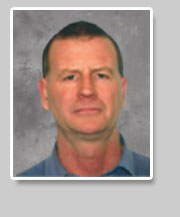Simulating Total Dose, Prompt Dose, Damaging Fluence and SEU using TCAD
This webinar will provide specific approaches for simulating electronic device behavioral changes, including oxide charging and physical damage, during their exposure to four of the most common radiation environments that occur during operation in space or near any other high energy particle or photonic source. High energy particles include XRays, Gamma Rays, energetic electrons, protons or neutrons, that emanate from nuclear events and other sources. The attendees will be shown how to simulate these radiation effects on devices for both high and low dose rates, using physics based TCAD simulations.
What attendees will learn:
- Introduction to a newly available and recently declassified Total Dose model
- Description of the physical mechanisms accounted for in the Total Dose Model, including radiation induced de-trapping of trapped oxide holes.
- How certain bias conditions during radiation can reduce the trapped hole concentration in radiation hardened oxides, leading to radiation induced threshold voltage recovery (this is NOT the normal “rebound” effect caused by the slow formation of interface traps).
- How to simulate a particle fluence that creates damage in the semiconductor
- How to simulate transient, very high dose rate “prompt” events.
- Simulating other, more traditional high energy Single Particle Events (SEE)
- Examples include, threshold voltage shift and inter device leakage from Total Dose oxide charging, Image Sensor Damage from a fluence of protons, Prompt Dose effects on a circuit, Single Event Burnout (SEB) of a power PiN diode, Single Event Upset (SEU) of a 22nm SRAM
Presenter
 Dr. Derek Kimpton, Principal Applications Engineer at Silvaco, spent four years characterizing radiation effects on devices at Plessey Semiconductors in Lincoln, England. Whilst there he published the paper in Solid-State Electronics on a new and predictive total dose oxide charging model, that is the basis for the code implemented in Silvaco’s latest TCAD Victory Device simulator.
Dr. Derek Kimpton, Principal Applications Engineer at Silvaco, spent four years characterizing radiation effects on devices at Plessey Semiconductors in Lincoln, England. Whilst there he published the paper in Solid-State Electronics on a new and predictive total dose oxide charging model, that is the basis for the code implemented in Silvaco’s latest TCAD Victory Device simulator.
Prior to his over 17 years at Silvaco, Dr. Kimpton received both a B.Sc. in Electronics and Ph.D. in GaInAs MOSFET fabrication from Kings College, London with an industrial year in the Optical Fiber division at GEC Hirst Research Center, in England. He also worked on the synthesis of silicon germanium (SiGe) by implantation of germanium as a Research Fellow at Middlesex University, England.
When: February 17, 2015
Where: Online
Time: 10:00am-11:00am-(PST)
Language: English
WHO SHOULD ATTEND:
All in the radiation effects community, with an interest in the simulation of radiation effects on electronic devices using physics based (TCAD) tools.

